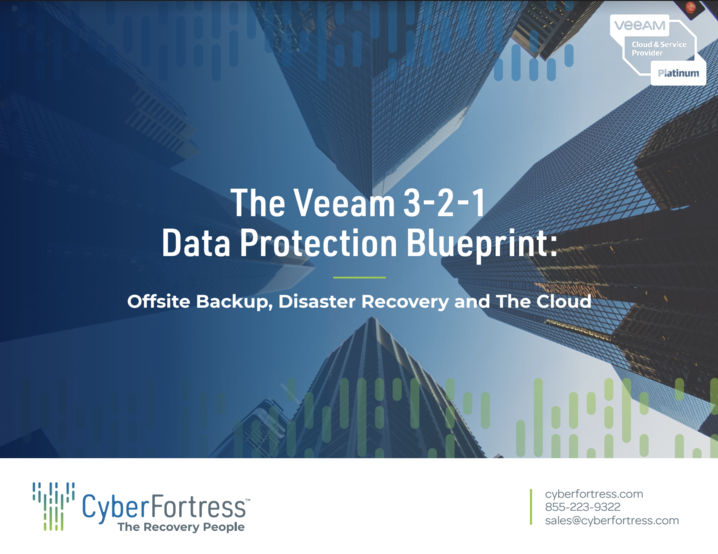In a 2020 disaster recovery (DR) survey conducted by 451 Research, four out of 10 companies with more than 1,000 employees experienced significant outages during the prior two years. Roughly half saw losses of $100,000 or more, and one in 10 of these events cost over $1 million. Further, the Veeam Data Protection Report 2021 puts the hourly cost of downtime at $84,650, with a typical event lasting around 79 minutes.
What’s more, the threats are many.
Wildfires, massive floods, a global pandemic, all have taken a toll in the past year. Cybercrime has also continued to balloon, with the issue of ransomware emerging fast-growing. According to Bitdefender’s 2020 Consumer Threat Landscape Report, these attacks grew an astounding 485% in 2020 over 2019.

The numbers speak for themselves. The story they tell executives and IT leaders is that it’s no longer a matter of “if” a company needs a disaster recovery solution, it’s “when” will the disaster strike and is the proper backup system in place. The most effective step they can take to keep from falling behind when a disaster strikes is to plan how to recover as quickly as possible.
The cost of recovery
A recovery time objective (RTO) refers to how long it takes a business to regain access to data and systems. It could be minutes for mission-critical apps and data, perhaps several hours for those that aren’t so critical. But while IT may want the smallest RTO possible, it costs a lot to bring everything back online immediately and at once.
That said, it’s important to categorize data and apps by their importance. That means understanding your company’s downtime tolerance for each workload. Depending on priorities, there’s a range of options to choose from including:
- Immediate total recovery: This requires a synchronous hot site – by far the costliest approach – but if anything goes down during a disaster, your company won’t miss a beat.
- Continuous data protection: Vendors like Veeam Software have offerings that deliver RTOs in seconds to minutes. They’re less expensive than a synchronous hot site but more so than a backup system.
- Backup systems: While there are many, Veeam CloudConnect uses storage snapshots to deliver best-in-class RTOs that range from instantaneous to an hour. And the price is about a third of CDP.
- Tape: It’s the cheapest route but recovery can take many hours, and if backups are stored offsite, it could be days. While not useful for recovery, tape is good for archiving data for compliance and legal matters.
A Framework to Help With RTO Needs
The National Institute of Standards and Technology (NIST) has a framework that can help determine your RTO needs and where the cost to recover and the cost of disruption meet!]
Avoiding missteps
Some companies make the mistake of putting disaster recovery on the back burner to handle “more pressing” IT items. Others cut DR when finances are tight and roll the dice. Both are major gambles given the damage an enterprise can suffer – missed sales, tarnished reputations, dissatisfied customers – just to save a few dollars in the short term.
Yet, even those that pursue disaster recovery management can make missteps that undermine efforts. Here are a few of the most common:
- Front line disconnect: IT must understand what’s critical to daily operations and prioritize app and data restoration. Unfortunately, some determine this on their own instead of getting insight from business managers and end-users on the front line who are most affected.
- Dropped dependencies: Apps often need other apps to run, and if not spun back in the correct order, they may not work. You don’t want to realize this when your company’s down and losing revenue by the second.
- Inadequate testing: Regularly test your DR system. Again, you don’t want to encounter issues when you’re trying to recover a data center’s worth of VMs, especially when company leaders are anxiously waiting.
- Lack of access: RTOs are only met when all users have access. This can be difficult for small IT departments serving hundreds of remote users whereas IT may find logging into every machine too labor and time intensive.
Recovery Discovery
Every business is different, so when it comes to recovery, you’ll need to do your own discovery. Start by figuring out which systems must be running and determine the cost of their not being available.
Doing this in-house will require DR experts who can recommend the right balance of protection for each workload and corresponding expense. That’s a lot to expect from an IT staff that deals with disaster issues only on occasion.Additionally, when you factor in the time that goes into ongoing management, you might find the DIY approach can be pricier than using a disaster recovery service provider.
Keep your options open, but make no mistake, when it comes to recovering from a disaster, it is essential to plan now to keep your company from falling behind.
Keep your options open, but make no mistake, when it comes to recovering from a disaster, it is essential to plan now to keep your company from falling behind.
Want to learn more about successful recovery? Download our latest eBook, The CyberFortress 3-2-1 Data Protection Blueprint: Offsite Backup, Disaster Recovery & The Cloud




